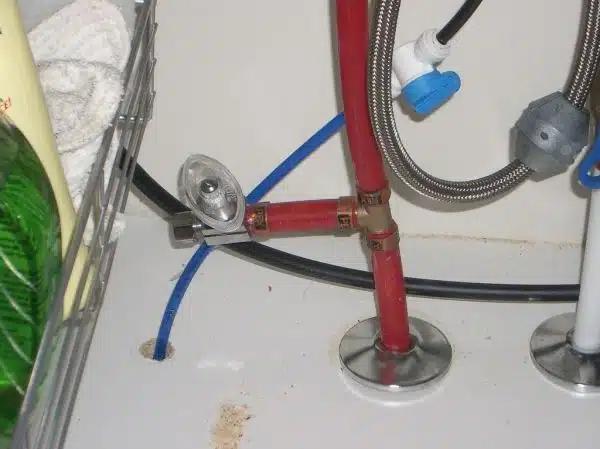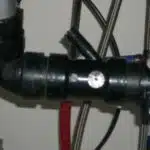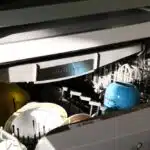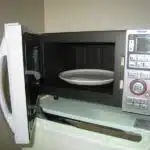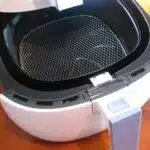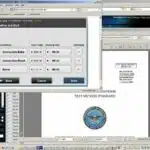As an appliance repair technician, one of the most common issues I come across in dishwashers is a clogged filter. A dishwasher filter is responsible for trapping food particles and debris to prevent them from blocking the spray arms or damaging the pump. Over time, this filter can become clogged with grease, food scraps, and mineral deposits from hard water, reducing its effectiveness and causing unpleasant odors in your dishwasher.
Cleaning a dishwasher filter is a simple task that can help extend the life of your dishwasher while ensuring it continues to function at optimal performance. In this article, we will discuss how to identify and access your dishwasher’s filter, as well as provide step-by-step instructions on how to clean it thoroughly. By following these essential maintenance steps, you can save money on costly repairs and keep your dishwasher running smoothly for years to come.
Understanding The Importance Of Cleaning Your Dishwasher Filter
As an appliance repair technician, I have seen firsthand the importance of regular maintenance for household appliances. Neglecting regular cleaning and upkeep of your dishwasher filter can lead to a variety of issues down the road. It’s comparable to neglecting your own health; it may not be immediately noticeable, but in the long term, it can have serious consequences.
The long term benefits of cleaning your dishwasher filter are numerous. For one, it will extend the lifespan of your appliance. A clogged filter can cause strain on other parts of the dishwasher, causing them to wear out more quickly. Additionally, a clean filter ensures that dishes are consistently cleaned properly and thoroughly. This means less time spent re-washing dishes or running additional cycles.
Regularly cleaning your dishwasher filter is just as important as changing the oil in your car or going to the dentist every six months. It may seem like a small task, but it can make a big difference in the efficiency and longevity of your appliance. In the next section, we’ll discuss some signs that indicate it’s time to give your dishwasher filter some attention.
Signs That Your Dishwasher Filter Needs Cleaning
- Clogged food particles are a common sign that the dishwasher filter needs cleaning. They may result in blockages, causing the dishwasher to not function properly.
- Soap residue buildup can also be an indicator of a clogged filter. This can leave dishes with a soapy, unclean feeling after the wash is complete.
- Unusual odors can also indicate a blocked filter. This is due to food particles that are trapped and unable to be washed away properly.
- Cleaning the dishwasher filter can be done by removing the lower dish rack and accessing the filter underneath.
- The filter should be removed and cleaned with a brush and warm soapy water.
- After cleaning, the filter should be replaced, ensuring that it is securely fastened and the dishwasher is ready for use.
Clogged Food Particles
Clogged food particles in the dishwasher filter can be a frustrating issue for homeowners. It not only affects the dishwasher’s performance but also leaves dishes dirty and unhygienic. Preventing clogs is crucial to ensure smooth functioning of your appliance. Always scrape off excess food from the dishes before placing them in the dishwasher. Rinsing dishes under running water can help remove any remaining food particles that may cause clogs.
Dealing with existing clogs requires timely action to avoid further damage to your dishwasher’s parts. Start by removing the filter and soaking it in warm soapy water for 15-20 minutes. Scrub gently using a soft-bristled brush to remove any stubborn debris. Use a toothpick or a straightened paperclip to clean out any leftover debris from the holes in the filter. Rinse thoroughly under running water and dry completely before reassembling.
As an appliance repair technician, I understand the importance of maintaining your dishwasher’s filter regularly to prevent unwanted clogs that can lead to costly repairs. By following these preventive measures and dealing with existing clogs promptly, you can ensure optimal performance of your dishwasher and enjoy clean, spotless dishes after every wash cycle. Remember, prevention is always better than cure when it comes to maintaining household appliances!
Soap Residue Buildup
Preventing soap residue buildup in your dishwasher is another important aspect of maintaining optimal performance. Soap residue can accumulate on dishes, the interior of the dishwasher, and the filter, causing clogs and affecting the appliance’s efficiency. Common causes of soap buildup include using too much detergent, using low-quality detergent, and hard water.
To prevent soap residue buildup, use only the recommended amount of detergent for your dishwasher model. If you have hard water, consider using a water softener or adding a rinse aid to help break down soap particles. Additionally, use high-quality detergent that contains enzymes to break down food particles effectively. Regularly cleaning the dishwasher’s interior with a vinegar solution can also help prevent soap buildup.
If you notice signs of soap residue buildup in your dishwasher, it’s time to clean the filter. Soap scum can clog up the filter and affect its overall function. To clean the filter effectively, remove it and soak it in warm soapy water for about 15-20 minutes. Use a soft-bristled brush to gently scrub away any stubborn debris and rinse thoroughly under running water before reinstalling it back into place. By following these preventive measures and dealing with existing soap residue promptly, you can ensure optimal performance of your dishwasher and enjoy spotless dishes after every wash cycle.
Unusual Odors
As an appliance repair technician, it is important to note that one of the signs that your dishwasher filter needs cleaning is unusual odors. If you notice a foul smell coming from your dishwasher, it could be due to food particles and other debris accumulating in the filter. These odors can be unpleasant and may even transfer onto your dishes after a wash cycle.
To prevent unusual odors from occurring, regular cleaning techniques should be applied. The filter should be cleaned at least once a month to ensure optimal performance of the dishwasher. Moreover, prevention methods such as scraping off excess food from dishes and pre-rinsing them before loading them into the dishwasher can also help reduce odor-causing particles.
If you have noticed unusual odors emanating from your dishwasher or any other signs that indicate that your filter requires cleaning, prompt action should be taken. By cleaning the filter using appropriate techniques and following preventive measures regularly, not only will you eliminate bad smells but also improve the overall efficiency of your appliance.
Safety Precautions To Take Before Cleaning Your Dishwasher Filter
Before you begin cleaning your dishwasher filter, it is important to take certain safety precautions to ensure that the process is safe and effective. The first step in this process is to prepare your dishwasher by turning off the power source and unplugging it from the wall. You should also empty out any remaining water or debris from the dishwasher before beginning.
Next, it is crucial to wear protective gear, such as gloves and safety goggles, to prevent injury while cleaning. Dishwasher filters can be sharp and contain harmful chemicals, so it is important to protect yourself from any potential hazards. Additionally, make sure that you have a well-ventilated area in which to work.
In summary, taking the proper pre-cleaning preparations and using protective gear are essential steps in ensuring a safe and successful dishwasher filter cleaning experience. By following these guidelines closely, you can avoid any unnecessary accidents or injuries and enjoy a clean and functional dishwasher once again.
Tools And Materials You Will Need
After taking the necessary safety precautions, it’s time to gather the tools and materials needed to clean your dishwasher filter. The items you will require include a screwdriver, a soft-bristled brush, white vinegar or baking soda, and a clean cloth. These are readily available in most homes, making this process an inexpensive one. However, alternative solutions can be used for cost-effective options.
To begin cleaning your dishwasher filter, locate it in your appliance. Filters are usually found at the bottom of the dishwasher and can either be cylindrical or flat-shaped. Once you have located the filter, remove it using a screwdriver if necessary. If it’s been some time since you last cleaned your filter, there may be food debris or other objects trapped inside that need to be removed.
Once you have removed the filter from your dishwasher, use a soft-bristled brush to scrub away any debris that has accumulated on it. You can also soak the filter in white vinegar or baking soda for about 20 minutes before scrubbing it with a brush. This helps to loosen any stuck-on grime and ensures that your filter is thoroughly cleaned. After cleaning the filter, rinse it under running water before replacing it back into your dishwasher.
Locating Your Dishwasher’s Filter
To properly clean your dishwasher filter, it is important to first locate the filter. The location of the filter may vary depending on the make and model of your dishwasher. Typically, it can be found at the bottom of the dishwasher tub, near the spray arm. It may be covered by a round or square cover that can be removed by twisting or pulling up.
Once you have located your dishwasher’s filter, it is important to identify its type. There are several different types of filters that may be used in dishwashers including self-cleaning filters, manual-clean filters, and combination filters. Self-cleaning filters use a grinder to pulverize food particles and wash them away. Manual-clean filters require periodic cleaning by hand while combination filters use both methods.
Identifying your specific type of filter will help you determine the best method for cleaning it. In the next section, we will discuss how to remove and disassemble your dishwasher filter to properly clean it and ensure optimal performance from your appliance.
Removing And Disassembling Your Dishwasher Filter
- To begin the process of cleaning the dishwasher filter, the first step is to remove the filter from the dishwasher.
- After the filter is removed, it should be properly disassembled into its individual components.
- When disassembling the filter, it is important to be very careful and take note of any parts that may come loose.
- Once the filter is fully disassembled, it should be thoroughly cleaned before reassembly.
Removing Filter
As an appliance repair technician, I have encountered various issues with dishwasher filters. One of the most common problems is a clogged filter, which can lead to poor cleaning performance and even damage to the dishwasher. To avoid such problems, it is essential to perform regular filter maintenance. In this article, we will discuss how to remove your dishwasher filter.
To begin with, you need to locate your dishwasher’s filter. Depending on the make and model of your appliance, the filter may be located at the bottom of the tub or inside the bottom of the sprayer arm. Once you have located it, you should turn off the power supply and water supply to your dishwasher before removing the filter.
Next, you need to disassemble your dishwasher’s filter. You may need a screwdriver or pliers for this step. Some filters are designed to be easily removed by hand, while others require tools for disassembly. Once you have removed all parts of the filter assembly, rinse them under running water and use a soft brush or toothbrush to remove any debris or buildup that has accumulated over time.
By following these steps for removing and disassembling your dishwasher filter, you can ensure that your appliance runs smoothly and efficiently. Remember to perform regular maintenance on your dishwasher’s filter to avoid common issues like clogs and poor cleaning performance. With proper care and attention, your dishwasher can serve you well for years to come.
Disassembling Filter
After locating the dishwasher filter and turning off the power and water supply, the next step is to disassemble it. This process involves removing all parts of the filter assembly, which may require a screwdriver or pliers. Some filters are designed to be easily removed by hand, while others need tools for disassembly. It is important to refer to your dishwasher’s user manual for specific instructions on how to disassemble your filter properly.
Once you have successfully disassembled your dishwasher’s filter, it is time to begin the cleaning process. You should rinse all parts under running water and use a soft brush or toothbrush to remove any debris or buildup that has accumulated over time. You can also use a mild detergent solution for thorough cleaning. Make sure you clean all crevices and corners of each part before reassembling them.
Regular maintenance of your dishwasher’s filter is essential for preventing problems such as clogs and poor cleaning performance. By following these steps in removing and disassembling your dishwasher filter, you can ensure that your appliance runs smoothly and efficiently. Remember that proper care and attention will extend the lifespan of your dishwasher, allowing it to serve you well for years to come.
Cleaning Your Dishwasher Filter With Soap And Water
As an appliance repair technician, cleaning a dishwasher filter is crucial to ensure its longevity and efficient performance. The first step in this process is to remove the filter from your dishwasher. It is usually located at the bottom of the machine and can be accessed by removing the lower rack.
Once you have removed the filter, rinse it thoroughly under running water to remove any loose debris or food particles. After rinsing, use soap and water to clean the filter, ensuring all sides are covered. Rinse again with water until no soap residue remains, then replace the filter back into your dishwasher.
Benefits of regular maintenance include better cleaning results and avoiding clogs that can lead to expensive repairs. If you prefer alternative cleaning methods, consider using vinegar and baking soda to deep clean your dishwasher filter. This method involves placing a cup of vinegar on the top rack of your dishwasher and running it on a hot cycle, then sprinkling baking soda onto the bottom of your machine before running another hot cycle. This combination helps break down any build-up in your dishwasher’s filter and pipes.
To deep clean your dishwasher filter using vinegar and baking soda, follow these simple steps: [transition into subsequent section].
Using Vinegar And Baking Soda To Deep Clean Your Dishwasher Filter
After cleaning your dishwasher filter with soap and water or using vinegar and baking soda, you may want to try an alternative method that uses lemon juice, salt, and ice. This method involves placing a handful of ice cubes in the bottom of the dishwasher, sprinkling a tablespoon of salt over the ice, and squeezing half a lemon onto the mixture. Then, run the dishwasher on its hottest cycle to allow the solution to work its magic.
While vinegar and baking soda are effective at removing grease and grime from your dishwasher filter, some people prefer using commercial cleaners for convenience. However, commercial cleaners can be harsh and contain chemicals that may be harmful to your health. It’s important to read the labels carefully before using any commercial cleaner on your dishwasher filter.
In summary, there are several methods you can use for cleaning your dishwasher filter. Whether it’s using soap and water, vinegar and baking soda or an alternative method with lemon juice, salt, and ice; each approach has its own advantages. Ultimately, choosing the best method depends on your preferences as well as how dirty your dishwasher filter is. In the next section, we will explore how to remove stubborn stains and deposits from your dishwasher filter.
Removing Stubborn Stains And Deposits From Your Dishwasher Filter
Like any other appliance in your home, your dishwasher filter requires regular maintenance to keep it running efficiently. Over time, tough grime and deposits can build up in your dishwasher filter, causing it to work less effectively. If left unchecked, this can lead to clogs and other malfunctions that could damage the machine.
Removing stubborn stains and deposits from your dishwasher filter is a straightforward process that any homeowner can do with the right tools and techniques. Start by removing the filter from the machine and soaking it in warm water with a few drops of dish soap. After this initial soak, use a soft-bristled brush or toothbrush to gently scrub away any remaining grime or buildup.
Once you’ve removed all visible traces of dirt and grime from your dishwasher filter, it’s important to take steps to prevent future buildup. One effective method is to place a cup of white vinegar on the top rack of your dishwasher during each cycle. This will help break down any remaining deposits left over from previous cycles, preventing them from accumulating in the future. Additionally, make sure to regularly clean out any food particles or debris that may be present in the bottom of your dishwasher before running a cycle.
When reassembling your dishwasher filter, be sure to double-check that all parts are securely fastened before starting up the machine again. Taking these simple steps will ensure that your dishwasher runs efficiently for years to come, saving you both time and money in the long run.
Reassembling Your Dishwasher Filter
After removing stubborn stains and deposits from your dishwasher filter, it’s time to reassemble the parts. It’s important to do this step correctly to ensure that your dishwasher functions properly. To begin, carefully place the cleaned filter back into its original position in the dishwasher. Make sure it sits snugly in place and is not loose.
Next, attach any clips or screws that hold the filter in place. Refer to your dishwasher’s manual if you’re unsure of where these should go. Once you’ve secured the filter, replace any other parts that were removed during cleaning such as spray arms or baskets. Double-check that everything is properly aligned and securely fastened before running your dishwasher again.
If you encounter any issues with reassembling your dishwasher filter, don’t hesitate to troubleshoot the problem. Check for loose connections or parts that may be out of place. If necessary, refer to your owner’s manual for additional guidance on reassembling techniques. By taking the time to properly reassemble your dishwasher filter, you can avoid potential problems down the line and keep your appliance running smoothly.
Now that you’ve successfully cleaned and reassembled your dishwasher filter, it’s important to test it out before loading in a full load of dishes. Run a quick wash cycle with nothing inside except for a few cups or plates to ensure everything is functioning as it should be. Pay attention to any unusual sounds or leaks, which could indicate a problem with the reassembly process. If everything looks good after testing, feel free to load up your dishwasher and get back to enjoying clean dishes without worry!
Testing Your Dishwasher After Cleaning The Filter
For example, let us consider a case where the dishwasher filter was clogged with food debris and grease. After cleaning the filter as per the maintenance routine, it is important to test its effectiveness. To do so, fill the dishwasher with dirty dishes and run a cycle. Check for any leftover food particles or residue on the dishes, as this indicates that the filter is not working properly.
Testing effectiveness after cleaning your dishwasher filter is crucial to ensure that your appliance functions optimally. A clogged filter can cause poor cleaning results and even damage your dishwasher in the long run. Therefore, it is recommended to test your dishwasher every time you clean the filter or at least once a month if you use it frequently.
In conclusion, testing your dishwasher after cleaning the filter should be an essential part of your maintenance routine. This simple step will help ensure that your appliance works efficiently and prolong its lifespan. Moving forward, let’s discuss how often you should clean your dishwasher filter to avoid any potential issues down the line.
How Often You Should Clean Your Dishwasher Filter
Frequency is a key factor in maintaining the efficiency and longevity of your dishwasher. Cleaning the filter should be done on a regular basis to prevent clogs and buildup. Since filters vary in design, it’s important to refer to your owner’s manual for specific instructions.
As a general rule, most dishwasher filters should be cleaned once a month. However, households with heavy use may require more frequent cleaning. It’s also important to keep an eye out for signs that indicate the filter needs to be cleaned, such as water not draining properly or dishes coming out dirty.
Methods for cleaning dishwasher filters can vary depending on the type of filter you have. Some can be removed and rinsed under running water, while others require a more detailed process involving disassembly and scrubbing. Regardless of the method used, it’s crucial to ensure that all debris is removed from the filter before reassembling and using your dishwasher again.
Moving forward into tips for maintaining a clean dishwasher, there are additional steps you can take beyond regular filter cleaning. By scraping excess food off dishes before loading them into the dishwasher and running hot water through the appliance periodically, you can help prevent buildup and extend the life of your machine.
Tips For Maintaining A Clean Dishwasher
After learning about how often to clean your dishwasher filter, it’s important to understand preventative measures that can be taken to maintain a clean dishwasher. One way to prevent excess debris from entering the filter is to scrape food particles off of dishes before loading them into the dishwasher. Additionally, running hot water in your sink for a few seconds prior to starting your dishwasher cycle can help dissolve any remaining food particles on dishes.
When it comes to cleaning your dishwasher filter, there are common mistakes that should be avoided. For example, using too much detergent or not using the correct type of detergent can cause buildup and clog the filter. It’s also important to avoid overloading the dishwasher, as this can prevent water from circulating properly and lead to dirty dishes and a clogged filter.
Overall, maintaining a clean dishwasher involves more than just cleaning the filter. By taking preventative measures and avoiding common mistakes, you can ensure that your dishwasher runs smoothly and effectively. However, if you do encounter issues with your dishwasher filter or other components of your appliance, troubleshooting common issues is necessary to keep everything in working order.
Troubleshooting Common Dishwasher Filter Issues
When it comes to dishwasher filter issues, there are a few common solutions that can help resolve the problem. One of the most effective ways to handle this issue is by cleaning the filter regularly. Dishwasher filters collect debris and food particles during each cycle, which can cause clogs and other problems if not cleaned out frequently. By removing and cleaning the filter every few weeks or as needed, you can prevent unwanted issues from arising.
Another preventive measure you can take is to scrape off excess food debris before loading dishes into the dishwasher. This will reduce the amount of waste that ends up in the filter, helping it work more efficiently and effectively. Additionally, running hot water through your sink before starting a dishwasher cycle can help soften any stubborn bits of food that may be stuck on dishes, making them easier to remove during cleaning.
Overall, maintaining your dishwasher’s filter is crucial for ensuring its optimal performance and longevity. While most filter issues can be resolved with regular cleanings and some basic preventative measures, there may come a time when you need professional assistance for more complex repairs. In the next section, we’ll discuss when it’s appropriate to call in a professional for dishwasher repairs and what signs to look out for.
When To Call In A Professional For Dishwasher Repairs
Having trouble with your dishwasher filter can be a frustrating experience. However, before calling in a professional for repairs, it is important to determine whether the issue can be resolved through DIY methods. In some cases, cleaning the filter may be all that is required to improve its performance and eliminate any problems.
Common repairs for dishwasher filters include replacing damaged or worn out parts, such as the mesh screens or spray arms. If you notice any signs of damage, such as cracks or breaks, it may be necessary to replace these components in order to restore proper function. Additionally, if you are experiencing issues with the water pressure or temperature inside the dishwasher, this could also indicate a problem with the filter that needs to be addressed.
Factors to consider before calling in a professional include your level of experience and expertise with appliance repair, as well as the severity of the issue at hand. If you are confident in your ability to troubleshoot and fix minor problems on your own, then attempting DIY repairs may be a viable option. However, if you lack experience or encounter more complex issues that require specialized knowledge or tools, it may be best to seek professional assistance from an appliance repair technician who can diagnose and resolve the problem quickly and efficiently. Ultimately, weighing these factors and making an informed decision about how best to proceed will help ensure that your dishwasher runs smoothly and reliably for years to come.
Conclusion
Cleaning your dishwasher filter is an essential task that should not be overlooked. Neglecting to clean your dishwasher filter can lead to a buildup of debris, causing your machine to malfunction and even break down. By taking the time to understand the importance of cleaning your dishwasher filter, you can ensure that your appliance runs smoothly and efficiently.
It is recommended that you clean your dishwasher filter at least once a month to prevent clogging and damage to the machine. To do so, you will need basic tools such as a screwdriver, pliers, and a soft-bristled brush. Take safety precautions before cleaning by unplugging the appliance and wearing gloves.
Locate the filter in your dishwasher and remove any visible debris before rinsing it under running water. For stubborn stains, use a baking soda paste or white vinegar solution. With proper maintenance, you can extend the life of your dishwasher and avoid costly repairs.
In conclusion, maintaining clean filters in your appliances is like changing oil in cars; it’s crucial for optimal performance. As appliance repair technicians, we advise regular cleaning of dishwasher filters for smooth operation. Neglecting this task can lead to costly breakdowns or even replacement costs. Remember to take safety measures when handling appliances and use appropriate tools for thorough cleaning. By following these simple steps, you can enjoy spotless dishes while prolonging the life of your trusty dishwasher!
Image Credits
- “Dishwasher water supply rough-in” by Vincent Ma (featured)

